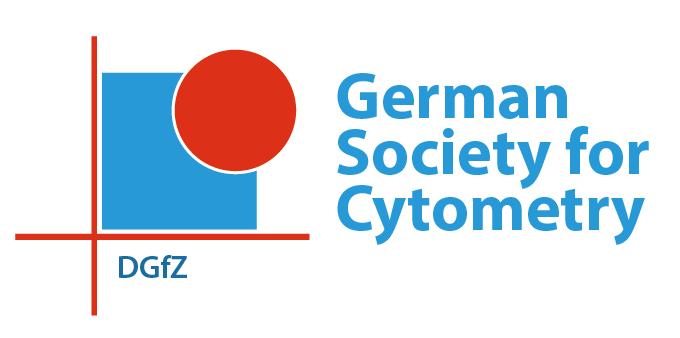High Dimensional Cytometry Session
Wednesday, 11.09.2024, 1:00 pm
Chairs: Henrik Mei & Bertram Bengsch
This session delves into the expanding realm of high-dimensional cytometry, a pivotal area in clinical immunology with rapid technological advancements and increasing data output. Data robustness, integrative data analysis and mathematical modeling help to transition high-dimensional data into scientific advance, and are at the forefront of today´s research.
By addressing this topics, our speakers feature exciting ways of single-cell-based precision medicine strategies in cancer and inflammation.

Chotima Böttcher
Experimental and Clinical Research Center (ECRC), Charité – Universitätsmedizin Berlin and the MDC
Proteo-metabolomic features of multiple sclerosis
Multiple sclerosis (MS) exhibits a heterogeneity of clinical features, genetic and environmental risk factors, and mechanisms of tissue damage. One of the fundamental pathomechanisms involves cell and humoral mediated immune dysregulation. Our study aims to investigate the association of diverse myeloid and B cells as well as molecular profiles with neuroinflammation in MS. We use a streamlined mass cytometry workflow to perform characterization of multiple immune cell types in CSF and peripheral blood of patients with MS as compared with other neuroinflammatory conditions. In addition, metabolomics and targeted proteomics were also performed. Multi-modal datasets on single-cell and molecular profiles reveal proteo-metabolomic features associated to neuroinflammation in MS.
Biosketch
Chotima Böttcher is a research team leader of the Clinical Neuroimmunology group at the Experimental and Clinical Research Center (ECRC), Charité – Universitätsmedizin Berlin and the MDC, Germany. Dr. Böttcher obtained her PhD at Institute of Pharmacy, Faculty of Natural Sciences at Martin-Luther-University Halle-Wittenberg, Halle/Saale, Germany. In the first year of her postdocteral fellow, she continued her study on biosynthesis of mammalian morphine at Martin-Luther-University Halle-Wittenberg and later at Donald Danforth Plant Science Center, MO, USA. In 2006, she moved to Charité – Universitätsmedizin Berlin and has started her new research field –systems immunology in neuroscience, with particular emphasis on myeloid cells including monocytes and brain microglia/macrophages. Currently, her research aims to identify cellular and molecular complexity in different body compartments during neuroinflammation.

Nils Blüthgen
Institute of Pathology, Charite Universitätsmedizin Berlin & Institute of Biology, Humboldt University of Berlin
Using CyTOF and single cell RNA-sequencing to dissect oncogenic signalling in colon cancer
We use mass-cytometry and single cell RNA-sequencing to study the role of different oncogenes on the intrinsic differentiation pathways in the intestinal epithelium. I will discuss different experimental and computational strategies that allow for high-throughput analysis of the Impact of oncogenes and drugs.
Biosketch
Nils Blüthgen studied Physics in Heidelberg and Berlin, obtained a PhD in Theoretical Biology from Humboldt University, worked as research fellow at the Manchester Interdisciplinary Biocenter before starting his group in Berlin in 2009. He is professor in Computational Modeling in Medicine at Charite – Universitätsmedizin Berlin and at the Institute of Biology, Humboldt University of Berlin. His group uses computational approaches and single cell techniques to understand molecular processes of cellular transformation.
Yaroslava Shevchenko
Department of Hepatology and Gastroenterology, Charité Universitätsmedizin Berlin, Berlin, Germany
A comprehensive assessment of compensation particles for generation of optimized reference controls for full spectrum flow cytometry
Full spectrum flow cytometry enables the analysis of 50 or more parameters in a single sample. Due to the complexity of such large panels the correct and reliable unmixing of fluorochromes requires identical spectra in both reference controls and fully stained samples to prevent unmixing errors. It is considered optimal to use the cells of interest to create single stain controls, but this is often impractical due to low expression of certain markers or limited availability of rare cell types. Compensation beads provide a commercially available and inexpensive alternative, binding antibodies consistently irrespective of specificity and expression level. Here, we evaluated 30 commonly used and commercially available fluorochromes on various compensation beads and human and murine primary leukocytes to establish optimal reference controls for full spectrum flow cytometry. Five types of compensation beads from different vendors were used to generate single stain controls and spectral signatures were recorded on 3-laser and 5-laser instruments. Our findings demonstrate significant differences in the spectral profiles of certain fluorochromes and their influence on spectral unmixing depending on the type of compensation particles used, including some fluorochromes that should be used on cells exclusively. This study underscores the critical importance of selecting appropriate reference controls to prevent unmixing errors and ensure the generation of reliable flow cytometry data.

